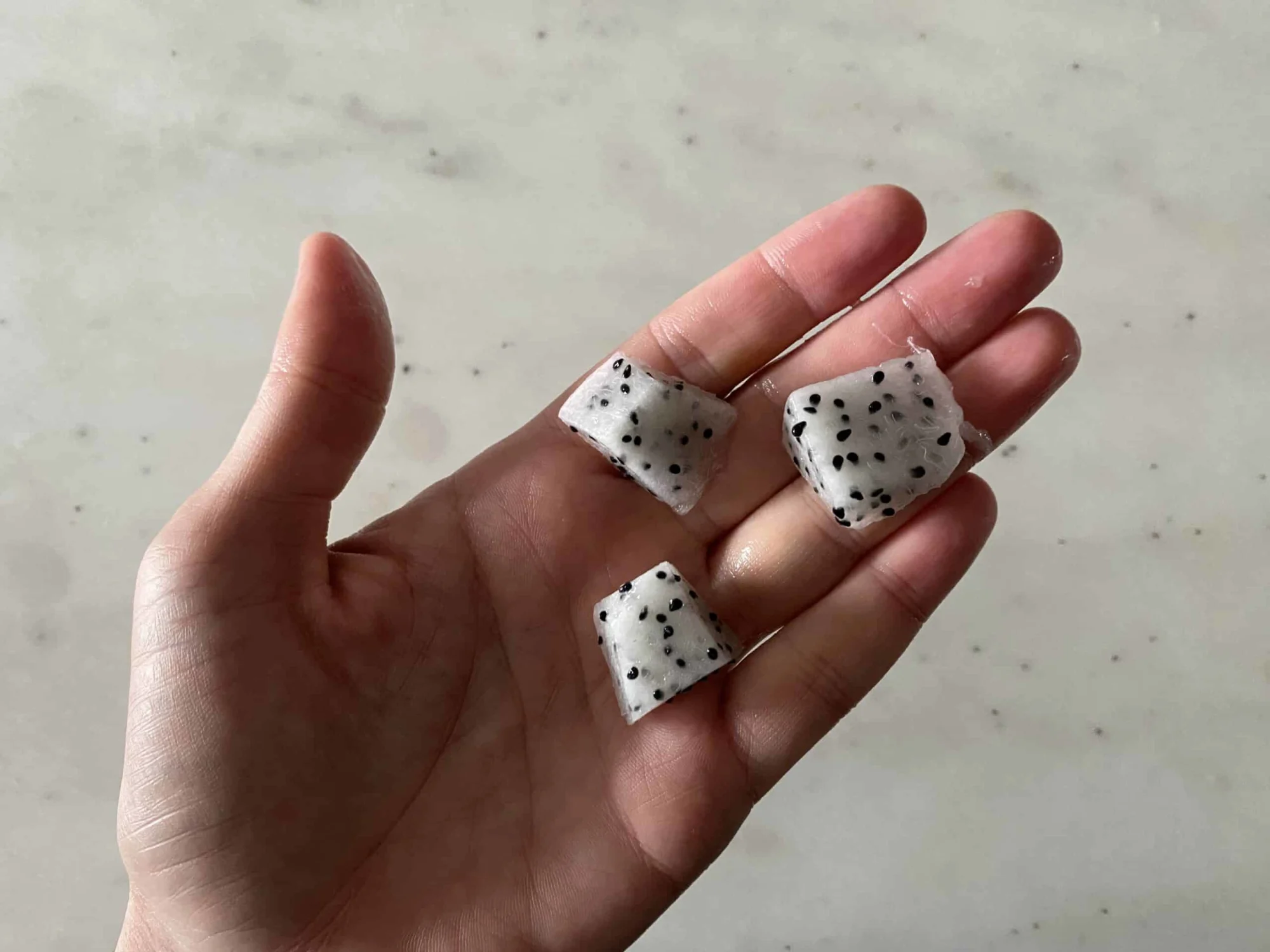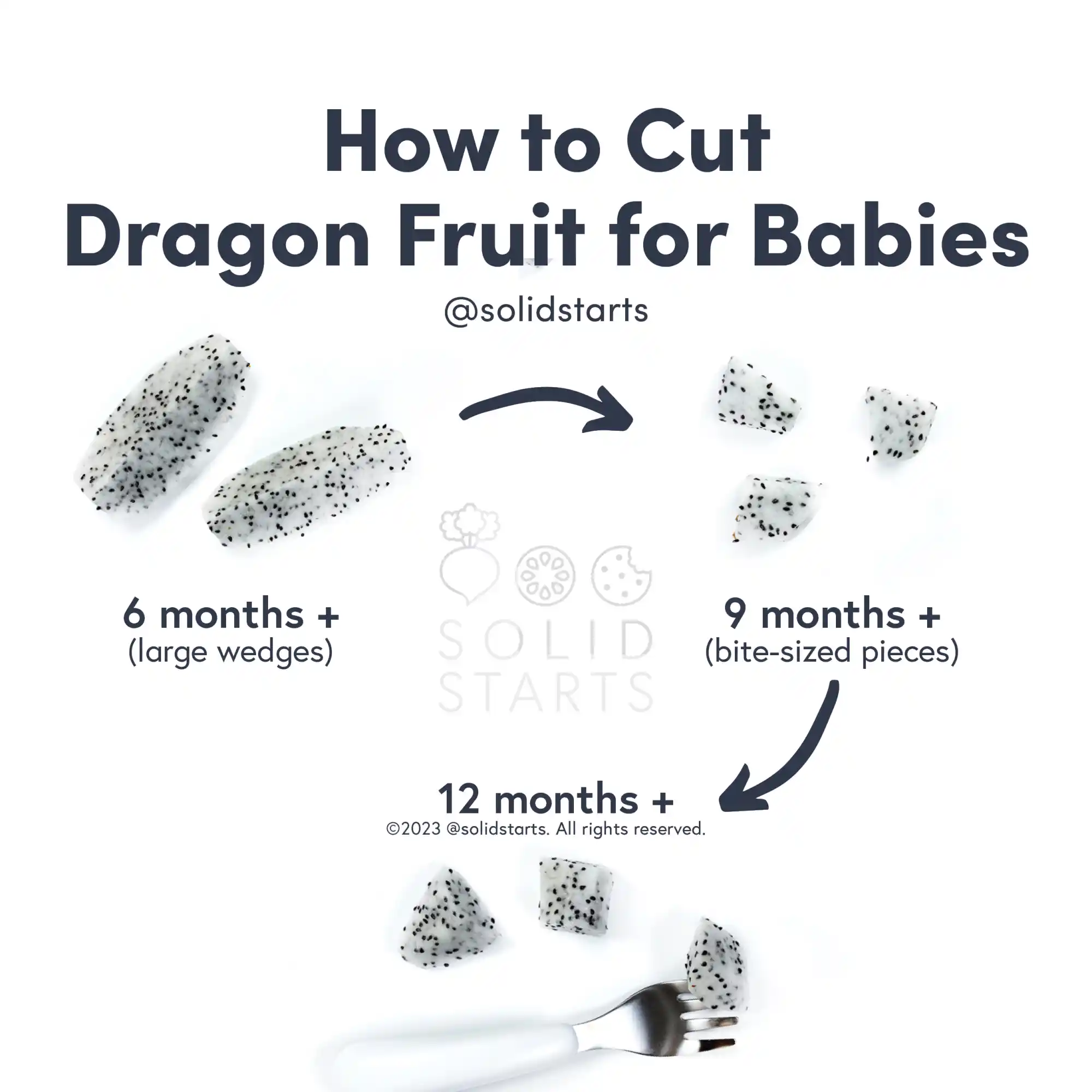Dragon Fruit (Pitaya)
Fruit
Age Suggestion
6 months
Iron-Rich
No
Common Allergen
No

When can babies have dragon fruit?
Dragon fruit may be introduced as soon as baby is ready to start solids, which is generally around 6 months old.
Dragon fruit is the edible flower of a cactus that is native to the Americas, and today, dragon fruit is cultivated in tropical zones worldwide. Also known as pitaya or strawberry pear, this popular fruit has a thick, brightly-colored skin and a soft, seedy interior, with flavors ranging from mild to super sweet.
Is dragon fruit healthy for babies?
Yes. Dragon fruit is rich in carbohydrates to provide quick energy, plenty of fiber to support gut health, digestion, and a diverse microbiome, vitamins C and K for iron absorption and proper blood clotting, as well as antioxidants to promote healthy cells.
Is dragon fruit a common allergen?
No. Allergies to dragon fruit are rare, but have been reported. Individuals with latex allergy or Oral Allergy Syndrome (also called pollen food allergy syndrome) may have an increased likelihood of being sensitive to dragon fruit. Oral Allergy Syndrome typically results in short-lived itching, tingling, or burning in the mouth and is unlikely to result in a dangerous reaction.
As you would when introducing any new food, start by offering a small quantity of dragon fruit for the first few servings. If there is no adverse reaction, gradually increase the quantity over future meals.
Is dragon fruit a choking hazard for babies?
No. Ripe dragon fruit poses a low risk of choking, though in theory an individual can choke on any food. To reduce the risk, prepare and serve dragon fruit in an age-appropriate way as described in the How to Serve section. As always, make sure you create a safe eating environment and stay within an arm’s reach of baby during meals.
Learn the signs of choking and gagging and more about choking first aid in our free guides, Infant Rescue and Toddler Rescue.
Videos
What are some great first foods for babies?
There are many wonderful options. Look for foods that are easy for baby to feed to themselves, that are low in choking risk, and that offer nutrients babies need, such as iron. Some of our favorite first foods include steamed broccoli, oatmeal, and mango pits. See more ideas in our guide, 50 Fantastic First Foods.
Do I need to start solids with purees?
You can if you’d like, but there's no developmental need to start with textureless food. Babies can be served modified versions of what you eat. Use our free First Foods Database to find how to safely serve any food.
How do you serve dragon fruit to babies?
Every baby develops on their own timeline, and the suggestions on how to cut or prepare particular foods are generalizations for a broad audience.
6 months old +:
Serve large quartered pieces or wedges of ripe dragon fruit with skin removed. If baby is having a hard time holding on to the slippery fruit, try rolling the pieces in another food to help add grip, such as finely ground nuts, shredded coconut, or hemp seeds.
9 months old +:
Offer bite-sized pieces of ripe dragon fruit, skin removed, for baby to pick up with their developing pincer grasp (where the thumb and index finger meet). If you’d like to continue to offer large spears or sections for baby to take bites from, that’s fine, too.
12 months old +:
Serve large wedges or bite-sized pieces of ripe dragon fruit, skin removed, either as finger food or for utensil practice. At this age, you can also try serving a very ripe dragon fruit half still in its skin and let the child practice scooping the fruit with a spoon.


How to cut a dragon fruit for babies
How often should you offer solids? See our sample feeding schedules for babies of every age.
Our Team
Written by
Expert Tips Delivered to Your Inbox
Sign up for weekly tips, recipes and more!
Copyright © 2024 • Solid Starts Inc





